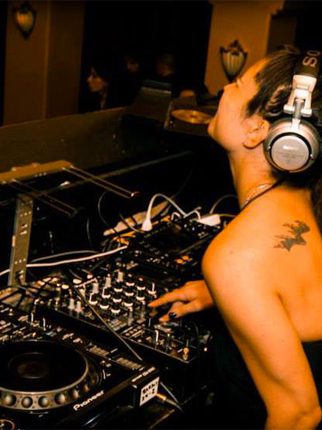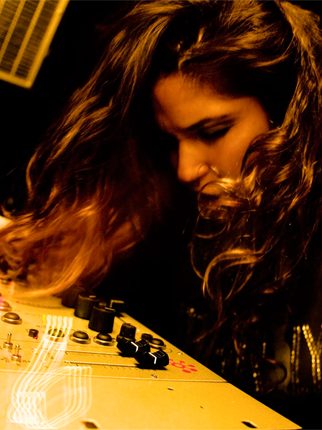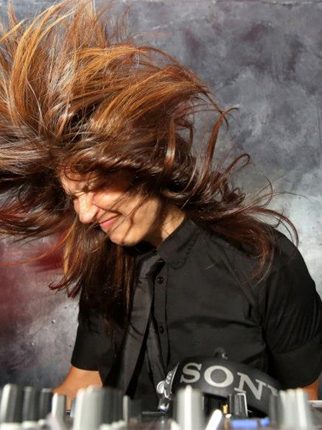So You Wanna Be a DJ #1: The Equipment
Charissa Saverio (aka DJ Rap) knows a thing or two about a thing or two when it comes to DJing and production. With a discography of more than 300 tracks, her dancefloor tenure has seen her work and collaborate with a slew of talented people including BT, Eric Morrillo, Hans Zimmer, Hybid, and DJ Tydi, to name but a few.
In addition to her dancefloor business, Charissa has produced music for PlayStation, Wii, Twix, and seven major movies, including music scores and compositions for Mission Impossible (Tom Cruise), Isolation, Run Lola Run, Enough (J-lo), and Rogue Trader (Ewan McGregor). She’s also a classically trained pianist and songwriter—and a beast behind the turntables.
Lucky us, lucky you, we’ve tapped the multitalented, accomplished, ambitious, and very driven DJ Rap to drop some knowledge on you about what it takes to be a DJ. Don’t forget to check back each week for a new chapter in this ongoing series.
Class is now in session.

So you wanna be a DJ, or maybe the next superstar producer? You think you’ve got what it takes to be the next Armin van Buuren, Avicii, Steve Aoki or maybe Skrillex—or just like me, if you’re a lady with world domination in mind? Only problem is, you don’t know where to begin. You’ve come to the right spot.
I believe in paying it forward, passing the torch that still burns brightly in my hands. I’ll talk about something interesting that will help you through my own experiences, rather than trying to sound clever. It’s honest, but remember: It’s only one person’s opinion. I’m not new to blogging; I have a production blog called Open the DAW, which you can check out on my site.
The idea came to me because I started teaching this very thing at Hollywood Arts in 2010, then designing curricula for schools like Icon Collective, then teaching at Dubspot, and finally my very own school, Music Tech Collective, which launched on October 12. My mate BT first told me about these educational programs and organizations, and I was forever hooked on teaching, as well as my career driving me the whole time. It’s wonderful helping out the new blood and seeing how they light up when they realize their musical dreams are totally obtainable with some simple guidance.
The So You Wanna Be a DJ series will explain the basic beginning of becoming a DJ and learning to produce, and hopefully help guide you on your path to becoming an underground superstar. (Who really wants to be famous? It sucks. This is way cooler.)
Before we get into techniques, let’s start off by talking about equipment so you’ll know what to use. Of course, you don’t need these items exactly to start with, as I realize we’re all on our own budgets. However, you’ll need to buy it only once, and you get what you pay for. In the long run, you’ll pay more to replace things if you’re buying cheap equipment. Trust me: Been there, done that.
Part 1: DJ Equipment

There are many types of equipment, so it really is a matter of personal taste. What I talk about here is just what I happen to believe in, and this stuff works for me. I mean no disrespect to the other brands and versions out there.
Decks: Although I still own the one and only pair of turntables I’ve ever bought, SL-1200s, the Pioneer CDJ-2000 Nexus and DJM 900 Nexus Mixer is my weapon of choice. I simply love Pioneer. (No, I haven’t abandoned vinyl; this past Nocturnal Wonderland, I played a classic house set of pure vinyl. But you try carrying 20-lb. crates to Ibiza, only to find when you get there that the crates nicked!)
I’m always ready to play with two thumb drives in my pocket. I also keep a sleeve of CDs handy to give away, and having copies of drives is smart in case your originals get damaged.
Serrato, Push, VDMX, Traktor and Record Box are all great, and whatever makes you comfortable that you can master is all that counts.
Monitors: In my home studio, I use the Studiophile BX8s. I find they are incredibly accurate and really translate well to the dancefloor. I also use a pair of NS-10s, which help me with what I call the “car radio mix test.” In other words, if it sounds good in my car, it sounds good anywhere. For my mains, when I’m writing and producing, I alternate between the above and my VXT-8s, which have a massive sound.
Headphones: When producing, I use MO-FI from Blue. They are simply the best headphones out there—solid, true sound with a built-in amp, should you need it—and I haven’t gone deaf yet. For DJing, I use V-MODA.
This is propa advice from yours truly, DJ Rap. In the next installment, I’ll let you in on my production tools in the studio.
Luv and bass…
After designing curricula for schools like Icon Collective, then teaching at Dubspot, DJ Rap launched her very own school, Music Tech Collective, on October 12.
Follow DJ Rap on Facebook | Twitter | SoundCloud





